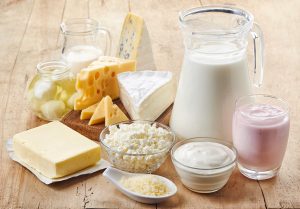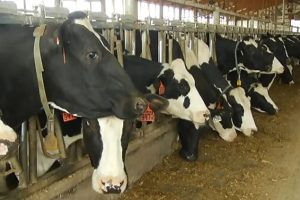
On Nutrition
A woman standing next to me asked if I knew what “A2” meant. As luck would have it, I did. In case you have also noticed A2 milk in your grocery store’s dairy case and wondered what it is, allow me to offer a quick science lesson that starts with casein, the main protein in cow’s milk.
Beta-casein, one type of casein, comes in two nearly identical forms — A1 and A2. As with all proteins, beta-casein is made up of a long chain of amino acids, and of the 209 amino acids in beta-casein, the A1 and A2 versions have 208 in common. This tiny difference means that when we digest A1 beta-casein, a protein fragment called beta-casomorphin-7 is released, and this fragment may contribute to digestive distress in certain people.
So what does this mean for you? It means that if you have trouble digesting cow’s milk and assumed you were intolerant to lactose, the natural sugar in milk, it’s possible that you’re actually intolerant to A1 beta-casein.
For example, one study published in 2020 had 35 adults with diagnosed lactose intolerance drink each of four types of cow’s milk on separate days: A2 milk, conventional milk (75% A1/25% A2), milk from Jersey cows (25% A1/75% A2) and lactose-free milk (60% A1/40% A2). The researchers measured participants’ symptoms — abdominal pain, bloating, flatulence, diarrhea and fecal urgency. Overall, lactose-free milk resulted in the fewest symptoms, with A2 milk coming in second place.
Originally, all cow’s milk was A2 milk. A1 beta-casein is the result of a genetic mutation that appeared a few thousand years ago in some European dairy herds. Today, a cow’s genes determine which type of beta-casein is in her milk. Each cow inherits a copy of the beta-casein gene from both parents, so modern cows can be purely A2, purely A1, or an A1/A2 hybrid.
Most milk available in the United States comes from Holstein Friesian cows — the world’s most popular dairy cattle breed — and contains a mix of A1 and A2 beta-casein. The less-common Guernsey and Jersey cows, as well as African and Asian cattle breeds, produce mostly A2 beta-casein. Farmers in New Zealand and Australia started converting their herds to A2-producers a few decades ago, while in the United States this trend is more recent. Typically, converting a dairy herd takes about 10 years, starting with genetic testing of existing cows and continuing with a breeding program using pure A2 bulls.
A2 milk has become a common option in grocery store dairy cases. Currently, fluid milk — including chocolate milk — and half-and-half are the only A2 options. So, who should or shouldn’t try A2 milk?
- If you’ve been medically diagnosed with a cow’s milk allergy, then you should avoid all cow’s milk, including A2 milk.
- If you think you’re lactose intolerant but lactose-free milk still causes you digestive woes — or if you can tolerate small amounts of cow’s milk before experiencing digestive issues — you may want to try A2 milk to see if you tolerate it better.
- If you are lactose intolerant and can comfortably drink lactose-free milk, A2 milk won’t offer additional benefits.
- Similarly, if you already digest conventional cow’s milk just fine, A2 milk won’t offer you any unique benefits. Despite speculation that diets higher in A1 beta-casein may contribute to several health conditions, there is no conclusive scientific data to support that.

























